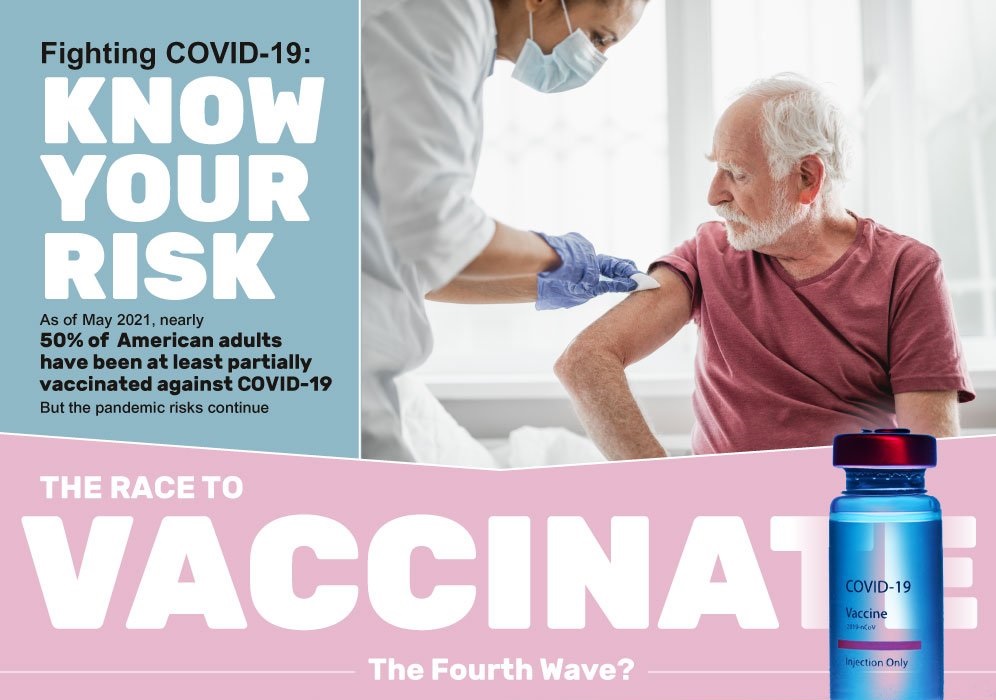Fighting COVID-19 now requires knowing your risk. As of May 2021, nearly 50% of American adults had been at least partially vaccinated against COVID-19, but the risks continue. From December to March, hesitancy about getting the vaccine fell by half. Many people admitted that they could be persuaded to get the vaccine if it meant that they could stop wearing masks and travel freely.
In the last two weeks of March 2021, coronavirus cases increased across the U.S. Vaccines have been available for every American adult since May 2021, but it will take several more months to reach herd immunity. Even with the rise in vaccinated individuals, states across the United States are seeing a surge in infections due to many reasons. At least 18 states have lifted safety restrictions, there has been waning public compliance with social distancing, and the spread of highly contagious vaccine-resistant variants have all contributed to this surge.
Vaccines offer good protection, but not complete protection. No vaccine is 100% effective at preventing disease. In a pandemic, no one is safe until we are all safe. Existing vaccines are less effective against new variants, and it is still unclear whether vaccinated people can still infect others. This means vaccinated people should continue some precautions until the pandemic ebbs. Slowing the spread not only stops the virus but slows the emergence of new variants.
To achieve herd immunity, 70-85% of the population needs to be vaccinated. In that time, new variants will continue to evolve and spread. By the time most of the world is vaccinated, first-generation vaccines will most likely be ineffective, and another round of mass vaccination will be required. Worldwide, 2 in 3 epidemiologists agree viral mutations will render first-generation vaccines ineffective by 2022 and 88% agreed that low vaccination rates in some countries would lead to more vaccine-resistant strains.
There is a better way to end the pandemic: understanding COVID-19 risk. A wide variety of health conditions have been associated with an increased risk of infection and severe disease. Cancer, lung and kidney disease, diabetes, dementia, heart conditions, immunocompromised individuals, and liver disease are all health conditions associated with increased risk. Yet, not every individual with one of these conditions will develop severe COVID-19.
Knowing your risk can help you return to normal life. By understanding individual risk, precautions can be targeted to those in need and individuals can decide for themselves how much risk they are willing to face. Risk-based precautions follow a pattern. The majority of people can practice routine precautions like masking and hand-washing. Those at-risk can employ more rigorous precautions like social distancing and avoiding crowds. Those who become infected will receive better treatment because of additional therapies for at-risk patients before they develop severe disease.
The impact of understanding COVID-19 risk is immense. Safety measures become more palatable to the public, and there will be increased compliance with the necessary precautions, slowing the spread and mutation of the virus. at-home test kits determine the individual risk of developing severe COVID-19. They consider 16 comorbidities and genetic markers and improve risk prediction by 25% over standard clinical models. Knowing your risk can help fight the pandemic more effectively.


.jpg)